7051CEM Web Applications and AI
PART A
Introduction
In this research online shopping website is created on software named Java NetBeans. Java NetBeans is an open fount platform where everyone creates their own website and applications free of cost. A full compact online shopping website is created on Java NetBeans. Nowadays, creating a fully compact website is a very easy task to do because of AI technology. AI technology is spreading all over the world and creating a smooth life for people. Because of the updated technology any one can open their own online ecommerce business. There are various online platforms as well as software to create their own website and develop their application. In the current era, most local traders are now on online platforms and make an independent business selling their goods in various countries and also create their own website for promotion purposes. Here is a new e-commerce small business name as Computer for you where everyone can buy suitable goods from that website.
Aim
The main aim to create an online shopping website is to selling the goods on an online platform through the created website named as Computer for you, the sub aims are, gain customer satisfaction, spread the business worldwide, at least over ninety countries.
Objectives
The objectives to create the online shopping platform are:
- To establish a well-known brand in the ecommerce market.
- To create a craze on the customer’s mind towards their goods.
- To increase the sales revenue.
- To make a freedom business.
- To increase the rank of the website in search engines.
- To give a better experience to those who visit the website.
Methodology
The whole project was created on Java NetBeans software. The Whole Project is divided into two parts. The first part is Frontend Database and the second part is Backend Database.
Frontend Database
In the frontend database the website designing part is done. First the developer developed the introductory part. Here the developer works on the sign up, sign in, log in, log out section (Agrawal et al. 2021). The developer set the information for the viewers like in the sign up section the customer must enter their first, middle, last name and age, phone number, email-id, password, confirmation password, captcha solving part, opt enter section also developer install an automatic password detector that’s main to aim to create a strong password with a combination of special character, upper case, lower case, numbers for customer security reason.
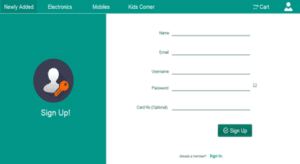
Figure 1: Sign Up Page
(Source: Self-Created on NetBeans)
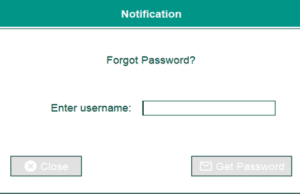
Figure 2: Forgotten Password
(Source: Self-Created on NetBeans)
After completing the introductory part the developer proceeds to design the creative part. In this section the developer works on the website interface part with a creative design (Antonelli et al. 2021). This is a major part because this creative design attracts the customers’ eyes.
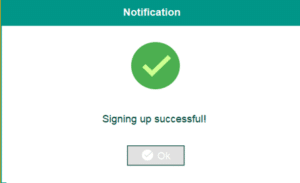
Figure 3: Sign Up Successful
(Source: Self-Created on NetBeans)
After completing the design part the developer proceeds to the customer handling section. At this part the developer first works on the search and sort section (Justesen et al. 2019).
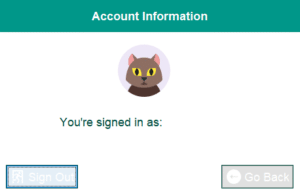
Figure 4: Account Information
(Source: Self-Created on NetBeans)
In this section, customers search for their favorite product easily and in the sort section the customer can choose the types, brand name, price range, years etc. Using the sorting part the customer gets better experience in search sections. After completing the design part the developer proceeds to the details about the product. Here the developer input the product details (Marelli et al. 2022).
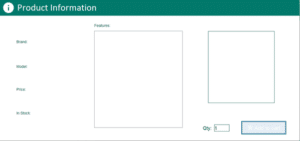
Figure 5: Product Information
(Source: Self-Created on NetBeans)
In this section the customers gain the knowledge about their searched product. In this section, the developer input the details of the product such as the product’s production date, expiration date (if any), costs, additional information etc.(Mugambi et al. 2022). After completing details about the product the developer proceeds to the customer review section.
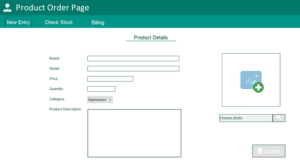
Figure 6: Product Order Page
(Source: Self-Created on NetBeans)
This part is one of the major parts because when the customer wants to buy something from the site, the buyer must read the customer review section to gain more knowledge about the product quality and delivery estimating date and also their product packaging system also the customer asks additional questions for the product. In this part customers can give their review toward the product which they buy (Qeyam et al. 2020).
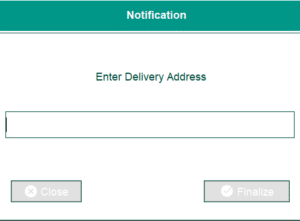
Figure 7: Enter Delivery Address
(Source: Self-Created on NetBeans)
After completing the customer review section the developer proceeds to the Add to cart Option. In this section, the customer adds their product in the Add to cart option for buying that product (Sarker et al. 2019). The main function of this key is that if the customer wants multiple various items for buying in a single payment then it is a very useful section otherwise the customer can directly purchase from the Buy Now option. In this section, the developer also developed the choice of choosing how many quantities, which colour etc.
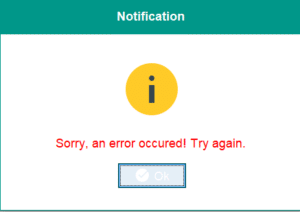
Figure 8: Error Occurrence
(Source: Self-Created on NetBeans)
After completing the Add to cart Option the developer proceeds to the Payment section. This Payment section is the most important part of the entire software because it is all about online selling goods. So the developer created this part very carefully (Srivastava et al. 2020). In this part the developer inbuilt the various payment methods.
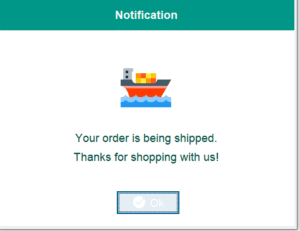
Figure 9: Order Placed Successfully
(Source: Self-Created on NetBeans)
The customer pays through debit card as well as credit card, in both sections buyer must enter their name, card number, expiration date, CVV number and the otp for verification reason. There are also available in instalment option which is a very useful option and the UPI and net banking option is also available (Tordai et al. 2022). The most trusted option is the COD where the buyer pays after receiving and checking the quality of the product. Then at last the developer developed the customer care support option which is also important because if the product gets any damage during delivery or any manufacturing fault or any money related issue then this option is used widely.
Backend Database
After designing the all frontend part the developer developed the backend database part. In this section the developer works on the customer’s personal data like their name, phone number, address, and generated digitized bill and tracking the order sections. After making a successful purchase from the shopping website the customer can track the order form Order Tracking options. In this part the developer installed the facility to get automatic order updates through the email-id as well as sms. Also the customer gets every update for their parcel’s current location. After getting the parcel successfully there is an automatic feedback link sent from the software.
PART B
The advertisement is one of the most impactful business strategies. The Computer for You online shopping business also has an advertisement section to expand their sector worldwide. The owner noted down the estimated cost for advertisement and the yearly seals.
| Year | Advertising Cost | Yearly Sale |
| 2014 | 225 | 12023 |
| 2015 | 240 | 12443 |
| 2016 | 245 | 12556 |
| 2017 | 250 | 12500 |
| 2018 | 271 | 12787 |
| 2019 | 280 | 12856 |
| 2020 | 288 | 13000 |
| 2021 | 290 | 13020 |
| 2022 | 313 | 13621 |
In the above mentioned data, the cost for the advertisement and yearly sales are noted down simultaneously. The researcher performs an analysis using Unified Modelling Language or UML representation through Entity Relation or ER diagrams. This analysis mainly focused on calculating the annual revenue after spending money on the advertisement section. The developer observed that in 2014, the cost of the advertisement is around 225 and the annual revenue is 12023. Then in 2015, the cost of the advertisement increased by 15 percent around 240 and the annual revenue turned out in terms of profit around 12443. Again in 2016, the cost of the advertisement increased by 5 percent around 245 and the annual revenue turned out in terms of profit around 12556. In 2017, the cost of the advertisement increased by 5 percent around 250 but this time the annual revenue turned out in terms of loss around 12500. In 2018, to cover up the loss portion the cost of the advertisement increased by 25 percent around 271 and then the annual revenue turned out in terms of profit around 12787.
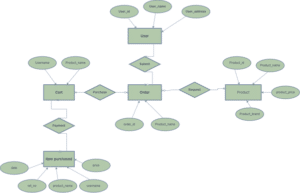
Figure 10: ERD
(Source: Self-Created on Draw.io)
In 2019, the cost of the advertisement increased by 7 percent around 280 and the annual revenue turned out in terms of profit around 12856.In 2020, the cost of the advertisement increased by 8 percent around 288 and the annual revenue turned out in terms of profit around 13000. In 2021, the cost of the advertisement increased by 2 percent around 290 and the annual revenue turned out in terms of profit around 13020. In 2022, the cost of the advertisement increased by 13 percent around 313 and the annual revenue turned out in terms of profit around 13621. For this analysis all values are put into the diagram. The Advertising Cost value put in the Y Axis and the Yearly Cost values put into the X Axis. Then putting all values in the X and Y axis the graph generated automatically. In the graph, the prediction for 2024, increasing the cost of the advertisement, the annual revenue is also increased. After getting the graph the developer evaluates the graph and concludes that to gain more profit the owner must invest in advertisement section.
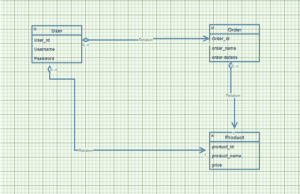
Figure 11: UML
(Source: Self-Created on Draw.io)
Reference List
Journals
Agrawal, S., Mulay, A., Pardeshi, P., Chavan, S. and Wankar, V., Review on COVID-19 Prediction Using AI/ML.
Antonelli, D., Cascella, R., Perrone, G., Romano, S.P. and Schiano, A., 2021. Leveraging AI to optimize website structure discovery during Penetration Testing. arXiv preprint arXiv:2101.07223.
Justesen, N., Uth, L.M., Jakobsen, C., Moore, P.D., Togelius, J. and Risi, S., 2019, August. Blood bowl: A new board game challenge and competition for ai. In 2019 IEEE conference on Games (CoG) (pp. 1-8). IEEE.
Marelli, D., Bianco, S. and Ciocca, G., 2022. Designing an AI-Based Virtual Try-On Web Application. Sensors, 22(10), p.3832.
Mugambi, L., Zuhlke, L. and Maina, C.W., 2022. Towards AI Based Diagnosis of Rheumatic Heart Disease: Data Annotation and View Classification.
Qeyam, A.S., 2020. Development of a Sports Web Application with an AI-based Chatbot in Kyrgyzstan (SportsKG) (Doctoral dissertation, American University).
Sarker, A., APPLICATION OF AI-BASED FACILITATOR IN THE LEARNING AND TEACHING ENVIRONMENT.
Srivastava, M., Yadav, V. and Singh, S., 2020. Implementation of Web Application for Disease Prediction Using AI. International Journal, 1(1), pp.5-9.
Tordai, H., Suhajda, E., Sillitoe, I., Nair, S., Varadi, M. and Hegedus, T., 2022. Comprehensive collection and prediction of ABC transmembrane protein structures in the AI era of structural biology. International Journal of Molecular Sciences, 23(16), p.8877.
Know more about UniqueSubmission’s other writing services:

